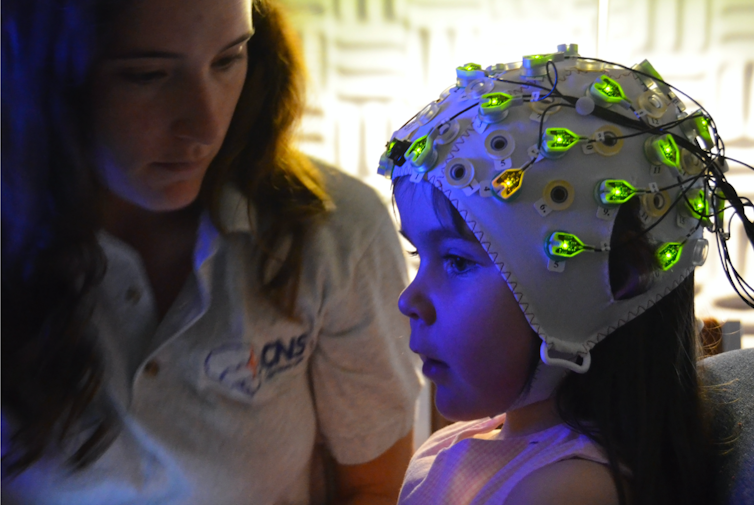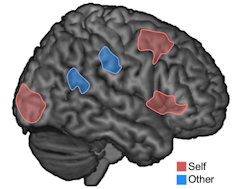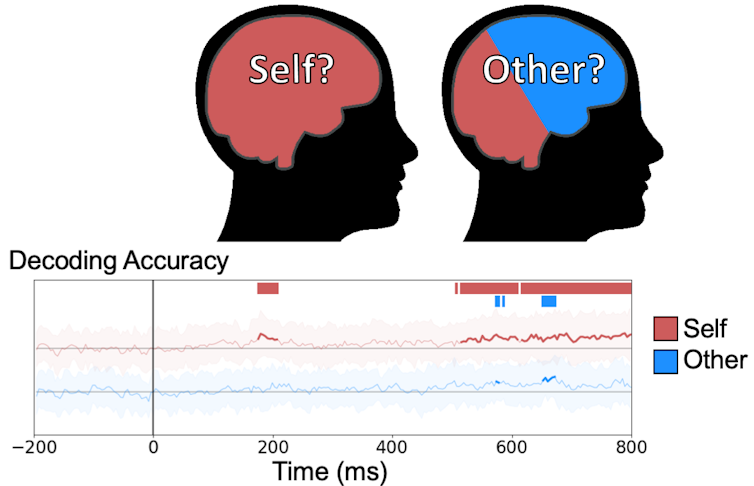Selfish or selfless? Human nature means you're both
Cognitive neuroscientists use brain imaging and behavioral economic games to investigate people's sense of fairness. They find it's common to take care of yourself before looking out for others.

Looking out for number one has been important for survival for as long as there have been human beings.
But self-interest isn’t the only trait that helped people win at evolution. Groups of individuals who were predisposed to cooperate, care for each other and uphold social norms of fairness tended to survive and expand relative to other groups, thereby allowing these prosocial motivations to proliferate.
So today, concern for oneself and concern for others both contribute to our sense of fairness. Together they facilitate cooperation among unrelated individuals, something ubiquitous among people but uncommon in nature.
A critical question is how people balance these two motivations when making decisions.
We investigate this question in our work at the Social Cognitive Neuroscience Laboratory at the University of Chicago, combining behavioral economics tasks with neuroimaging methods that let us watch what’s happening in the brains of adults and children. We’ve found evidence that people care about both themselves and others – but it’s the self that takes precedence.
Learning to be equitable
Children are sensitive to fairness from a very early age.
For instance, if you give two siblings different numbers of cookies, the one who receives fewer will likely throw a fit. Very young children, between 3 and 6 years of age, are highly sensitive to concerns about equality. Splitting resources is “fair” if everyone gets the same amount. By 6 years old, children will even throw resources away rather than allocate them unequally.
As they grow, children develop abilities to think about the minds of others and care about social norms. Soon, they begin to understand the principle of “equity” – a “fair” distribution can be unequal if it takes into account people’s need, effort or merit. For instance, a sibling who does more chores may be entitled to more cookies. This shift toward equity appears to be universal in humans and follows similar patterns across cultures.
Interestingly, it takes several years of development before children’s own behavior catches up with their understanding of fairness – for instance, by opting to share resources more equally rather than prioritizing their own payoffs.

To investigate how children’s developing brains guide their understanding of fairness, we invited kids ranging from age 4 to 8 into our lab. We gave them four candies to divide between two other people. After they decided how many (if any) to share, we measured their brain activity using noninvasive electroencephalography while they watched an adult split 10 rewards – like candies, coins or stickers – between two other people. The distributions could be fair (5:5), slightly unfair (7:3) or very unfair (10:0).
At first, kids’ brain activity looked the same whether they were observing a slightly unfair or very unfair distribution of the treats. After 400 milliseconds, the brain electrical activity for kids who saw the slightly unfair 7:3 split changed to look like the brain response of kids who saw the completely fair 5:5 division.
Our interpretation is that the young brains used that short lag time to consider why an adult might have handed out the treats in a slightly unfair way and then resolved that it may actually have been fair.
Further, children whose brain activity patterns were the most different when viewing fair versus unfair distributions were the most likely to have used merit and need when they originally divided up their candies, before they watched the adults.
So the EEG recordings indicate that even 4-year-old children expect distributions to be perfectly equal, which makes sense given their natural preference for equality. When children, especially after age 5, watch an adult make a completely unfair distribution, they work to try to understand why this might be the case.

Me first, then you
In your everyday adult life, you face decisions that affect not just yourself, but other people around you. Do you help a stranger pick up their spilled bag and miss your bus? Do you take the big piece of cake and leave the small one for the coworker who is coming later?
Put more generally, how do people balance self-interest against fairness for others when those motivations conflict?
To answer this question, we invited participants to play an economic game. In each round, an anonymous proposer would split US$12 among themselves, the participant and another player. The participant could decide to accept the distribution, allowing all three players to keep the money, or reject the distribution, meaning no one got anything. While participants made their decision, we measured their neural activity using EEG and fMRI. Functional magnetic resonance imaging reveals active areas of the brain by mapping blood flow.
The proposer was actually a computer that let us manipulate the fairness of the offers. We found that both fairness for self and fairness for the other were important for participants’ decisions, but people were more willing to tolerate offers which were unfair to others if they themselves received an unfair offer.
Our design also allowed us to ask whether the same regions of the brain are sensitive to self-interest and concern for other. A popular concept in cognitive science is that we are able to understand other people because we use the same parts of our brain to understand our self. The idea is that the brain activates and manages these shared representations depending on the task at hand.

But in our studies, we found that rather than shared brain areas, distinct brain networks were involved in thinking about fairness for self and other.
We also used machine learning to test whether by looking at the brain signals we could predict what kind of offer a participant had received. We could reliably decode a signal in multiple brain networks that corresponded to fairness for self – that is, “did I get at least a third of the $12?” And this focus on self-interest dominated the early stages of decision-making.

Overall, these results suggest that people prioritize their own payoffs first and only later integrate how their options affect other people. So while people do care about others, self-interested behavior is alive and well, even in behavioral economics games. Once people get their fair share, then they are willing to be fair to others. You’re more likely to help the stranger with her bag if you know there will be another bus in 10 minutes, rather than an hour.
[Get our best science, health and technology stories. Sign up for The Conversation’s science newsletter.]
Investigating more complicated scenarios
In daily life, people are rarely just responders, like in the game in our lab. We are interested in what happens when a person must make decisions that involve other people, such as delegating responsibilities among team members, or when an individual has limited power to personally affect the way resources are divided, as in government spending.
One implication from our work is that when people want to reach a compromise, it may be important to ensure that no one feels taken advantage of. Human nature seems to be to make sure you’ve taken care of yourself before you consider the needs of others.
The authors do not work for, consult, own shares in or receive funding from any company or organization that would benefit from this article, and have disclosed no relevant affiliations beyond their academic appointment.
Read These Next
What’s at stake in Trump’s executive order aiming to curb state-level AI regulation
In the absence of comprehensive federal AI regulation, states have stepped in. The Trump administration,…
The Bible says little about Jesus’ childhood – but that didn’t stop medieval Christians from enjoyin
Legends about Jesus’ early years that circulated in medieval Europe often drew on apocryphal texts.
Donor-advised funds have more money than ever – and direct more of it to politically active charitie
When foundations make grants to DAFs, the digital trail normally created instead becomes a dead end.





